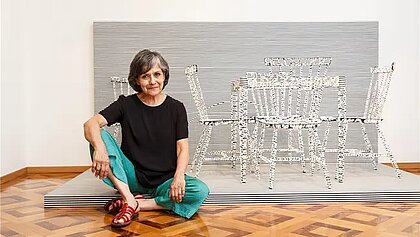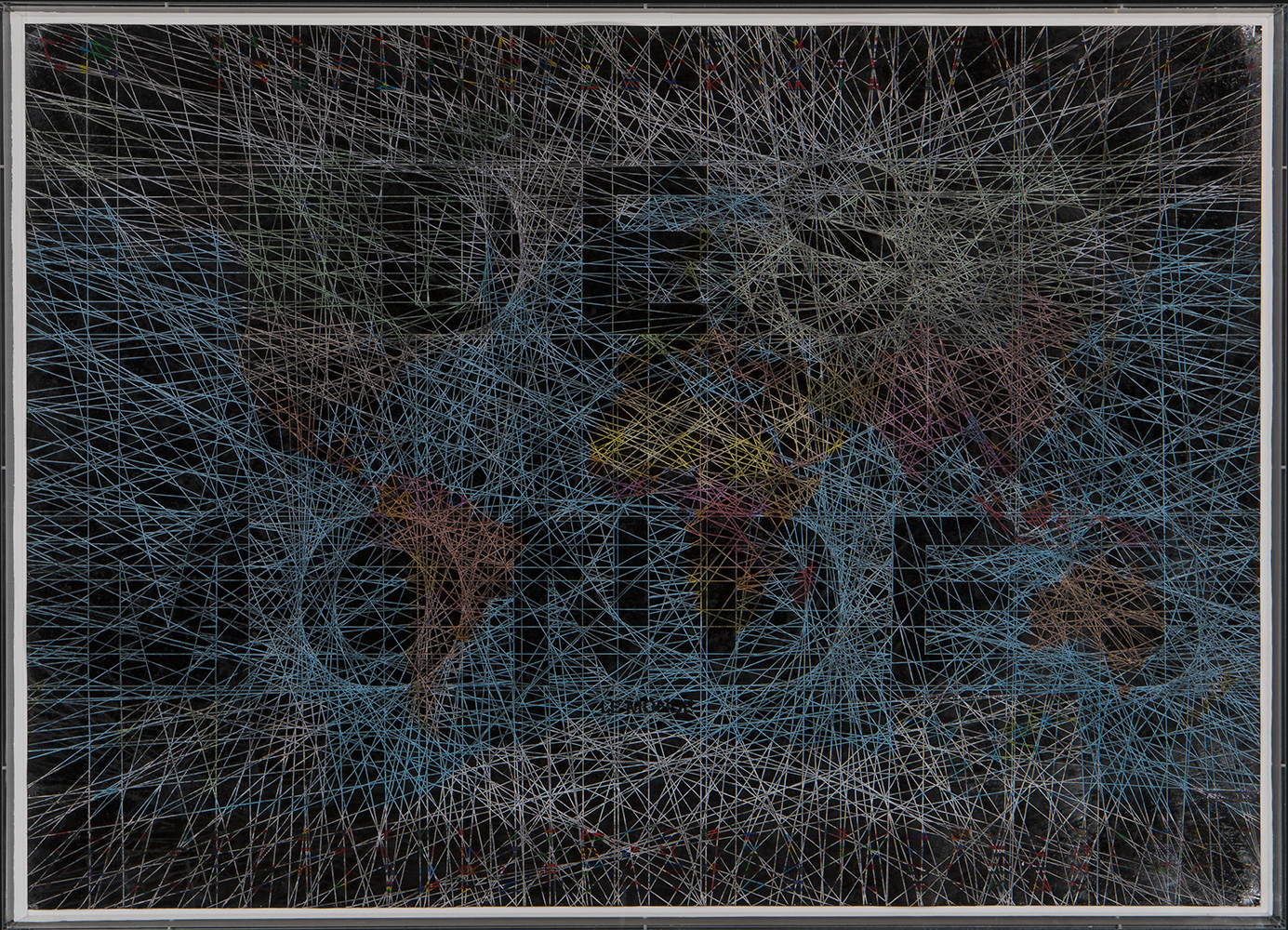Switzerland
Carmen Perrin


Biography
Carmen Perrin est née à La Paz (Bolivie) en 1953. En 1960, elle s’installe avec sa famille en Suisse, dont son père est originaire. Elle étudie à l’École supérieure des Beaux-Arts (aujourd’hui la HÉAD) de Genève, dont elle sort diplômée en 1981. Avec les artistes Stéphane Brunner, Albert Piloud et Jean Stern, elle fonde l’espace d’exposition Dioptre où elle expose son œuvre de 1981 à 1983, parallèlement à la galerie Andata/Ritorno. Elle commence à exposer en France au milieu des années 1980 et s’installe en 1986 à Marseille.
Elle remporte de nombreux prix, notamment en 1993 une bourse de la Fondation Landis & Gyr, à Zoug, qui lui permet de s’installer pour deux ans à Londres. Elle enseigne à l’École supérieure des Beaux-Arts de Genève de 1988 à 2004, avant de décider de se consacrer pleinement à son art. Les œuvres permanentes de Perrin dans le domaine public peuvent être admirées, entre autres, à la gare Cornavin à Genève, à l'aéroport de Kloten à Zurich, aux Jardins d'Eole à Paris. En 2017, son travail a été exposé pour l’inauguration du Pavillon Sicli à Genève. Elle vit et travaille actuellement entre la Suisse et la France.

About the artworks
Carmen Perrin s’impose au début des années 1980 comme une artiste plasticienne s’exprimant dans la sculpture. À la fin de la décennie, elle commence à travailler sur des projets urbains dans le domaine public en collaboration avec des architectes, ses œuvres témoignant d’un engagement croissant envers l’architecture et les contextes paysagers. Ses installations visent à établir une relation étroite entre la lumière et les matériaux, et les caractéristiques architecturales et sociales de l’espace public ou privé qu’elles investissent. Son travail d’atelier ambitionne d’élucider les liens étroits qui unissent le dessin et l’architecture, ses dessins témoignant d’une forte relation avec la dimension concrète de leur propre production, qu’il s’agisse du temps qui passe, du mouvement du corps ou de la main dans l’espace, de l’effort physique, etc.
La signification de l’œuvre de Perrin ne réside pas tant dans ses matériaux, coquilles d’œufs, bicarbonate, paille, ou encore plaques de polycarbonate en nid d’abeille, que dans leur puissance d’évocation.
Les matériaux industriels employés par l’artiste, acier ou béton, sont souvent associés à des matériaux naturels comme l’ardoise, le bois ou l’osier, ou manufacturés, comme la brique ou le caoutchouc.
Les œuvres de Carmen Perrin témoignent toujours d’une relation intime, presque narrative, entre l’expérience, le matériau, la forme et le contexte. Même les installations les plus monumentales demeurent discrètes, invitant le spectateur à entrer en relation physique avec eux et à remettre en cause sa propre perception de la réalité. Certaines de ses recherches interrogent particulièrement le volume et la manière dont il est défini par son contour et le vide qui l’entoure. Elles prennent à l’occasion une tournure plus ludique, comme dans la série de tableaux dont la texture est faite d’élastique ou de fil, ou dont la matière est éliminée afin de produire des compositions rythmiques et géométriques. L’artiste applique cette technique fondée sur l’absence à des structures solides qu’elle creuse et perce, conférant à ces objets lourds et compacts, légèreté, douceur et vulnérabilité.
The artworks
02
Des Mondes, 2008
Pastel à l'huile, grattage sur image imprimée
100 x 140 cm
Des Mondes, 2008
Pastel à l'huile, grattage sur image imprimée
100 x 140 cm

LA CHAMBRE, 2008
Polycarbonate et couleurs acrylique
100 x 250 x 3 cm
LA CHAMBRE, 2008
Polycarbonate et couleurs acrylique
100 x 250 x 3 cm